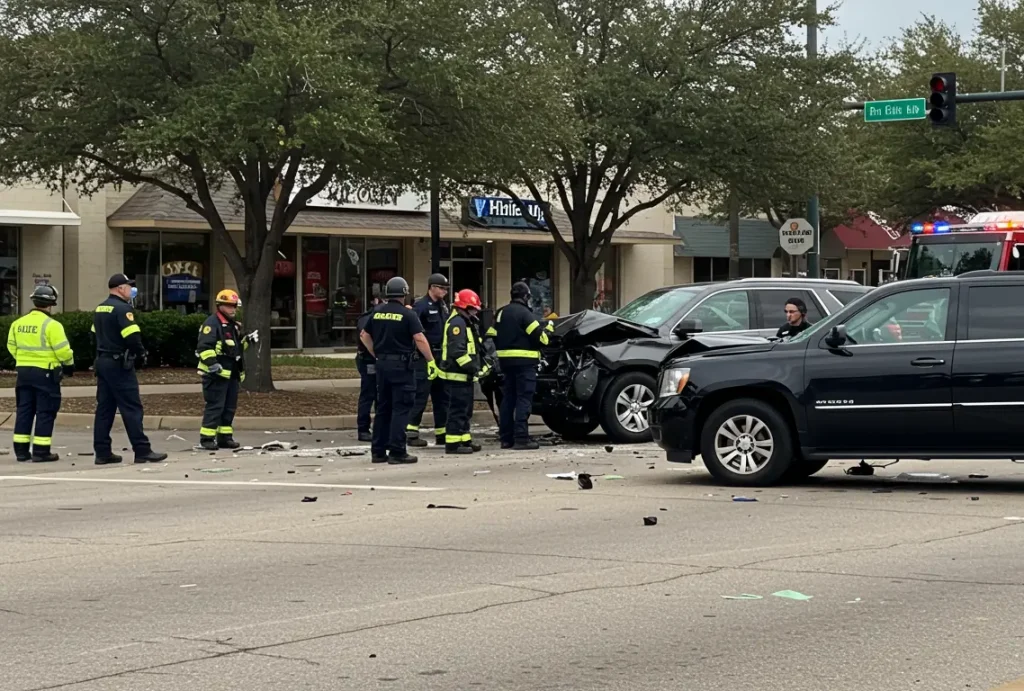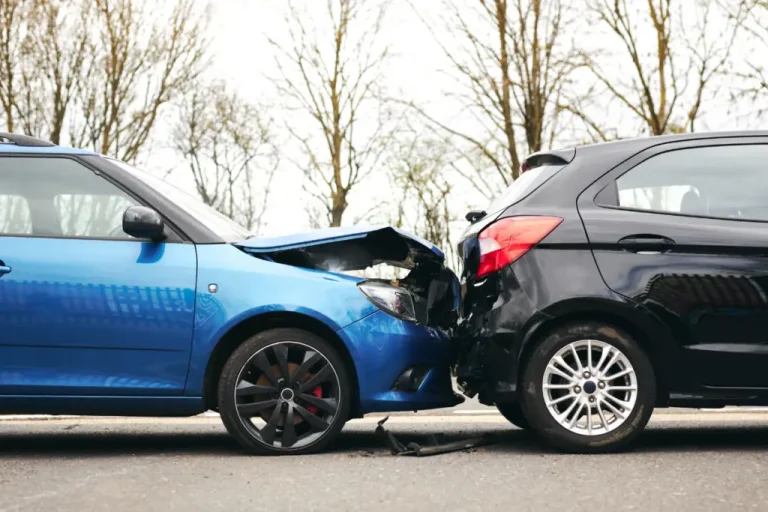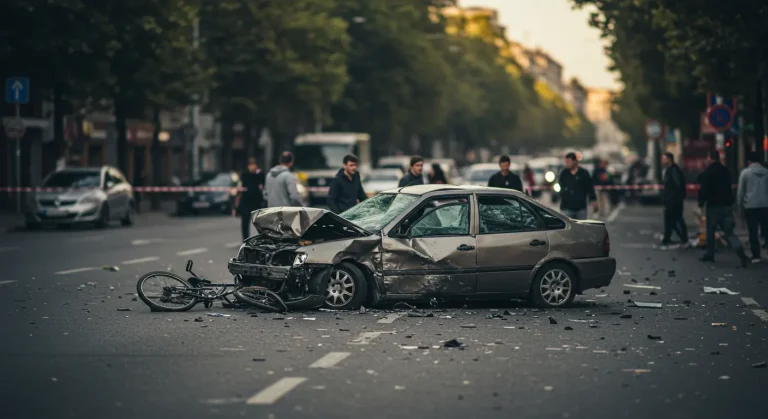McKinney Car Accident Case: A Complete Guide to Proving Fault and Getting Justice
Car accidents can be confusing, stressful, and downright overwhelming. If you’ve ever been involved in a McKinney car accident, you already know the emotional rollercoaster it brings. One minute you’re driving to the grocery store, and the next, you’re on the side of the road with your heart racing and your car in pieces.
Whether you’re a McKinney local or just passing through, understanding what to do after a crash — especially when it comes to proving fault — can make all the difference in how your case plays out.
In this article, we’ll walk you through everything you need to know to prove fault in a McKinney car accident case, protect your rights, and get the compensation you deserve.

What Makes McKinney Car Accidents Unique?
Located in Collin County, Texas, McKinney is a fast-growing city with busy roads like US-75 and Highway 380. With growth comes traffic — and with traffic, unfortunately, come accidents.
In 2023 alone, TxDOT data showed a spike in crashes along major intersections in McKinney. Many of these were caused by distracted driving, speeding, or failure to yield. Understanding the common causes helps you make sense of what happened — and how to prove who was really at fault.
First Things First: Understand Texas Negligence Laws
To win a car accident case in McKinney, you need to understand Texas negligence laws. In simple terms, negligence means someone didn’t act with reasonable care — and their mistake led to your injury.
The Four Key Elements of Negligence:
- Duty – The driver had a duty to drive safely.
- Breach – They broke that duty by acting carelessly.
- Causation – Their actions directly caused the accident.
- Damages – You suffered losses (medical bills, lost wages, etc.).
Texas follows the 51% Bar Rule under comparative negligence. That means if you’re more than 50% at fault, you can’t recover damages. But if you’re 50% or less, your compensation will be reduced by your percentage of fault.
Also Read: Princess Diana Car Accident
Step 1: Collect Evidence at the Scene
Right after the accident, your phone becomes your best friend. Take photos, gather names, and record details. Here’s a simple checklist:
What to Photograph:
- Your car and the other vehicle(s)
- Skid marks
- Road signs or traffic lights
- Weather and road conditions
- Injuries (if safe to do so)
Talk to Eyewitnesses:
Ask for names and numbers. A quick anecdote here: Sarah, a McKinney resident, was sideswiped at a four-way stop. The other driver claimed she ran the sign, but a witness stepped forward and cleared her name. Eyewitnesses can make or break a case.
Step 2: Analyze the Police Report
Always call the police. A McKinney police report offers an objective account of what happened. Officers will document:
- Time and location of the crash
- Observations of damage
- Statements from both parties
- Possible traffic violations
Double-check the report for accuracy. If something looks off, you can file an amendment request. Don’t just assume it’s 100% correct — mistakes happen, and even small errors can impact your case.
Step 3: Review Traffic Camera Footage
Did you know many intersections in McKinney are monitored by traffic cameras? This footage can show:
- Who ran the red light
- How fast each car was moving
- Which direction everyone was headed
Contact City of McKinney Traffic Operations or your attorney to request footage. The sooner you ask, the better — footage may be deleted after a few days or weeks.
Step 4: Inspect the Vehicle Damage
Sometimes, your car tells the story. A dented rear bumper? Likely a rear-end collision. Crumpled side door? Possibly a T-bone.
Hire a certified mechanic or accident reconstruction expert to:
- Examine paint transfer
- Check impact points
- Assess the damage pattern
This type of evidence supports or disputes what the drivers are saying — and juries love hard evidence.
Step 5: Bring in the Experts
When things get complicated, it’s time to call in expert witnesses. These professionals include:
- Accident reconstructionists – They recreate the accident scene using physics and data.
- Medical experts – They explain your injuries and link them to the crash.
- Traffic engineers – They can talk about road design flaws or poor signage.
Their testimony adds credibility and clarity, helping judges and juries understand technical details that regular folks might miss.
Step 6: Navigate the Insurance Maze
Dealing with insurance companies can feel like wrestling with an octopus. Here’s how to keep control:
✅ Do:
- Notify your insurer ASAP
- Provide clear, honest statements
- Keep track of medical bills and repairs
- Follow up regularly
❌ Don’t:
- Admit fault (even saying “I’m sorry” can be risky)
- Accept the first settlement offer
- Give a recorded statement without legal advice
For extra support, work with a McKinney personal injury lawyer who knows the ropes and can fight for a better payout.
Step 7: Build a Strong Legal Case
Let’s be real — winning a McKinney car accident case isn’t just about having evidence. It’s about presenting it well.
A good attorney will:
- Organize your documents (police report, medical records, photos)
- Craft a timeline of events
- Call expert witnesses to testify
- Challenge the other party’s claims
Think of your case as a story. Your lawyer is the narrator, and they need to make sure the jury believes you over the other guy.
Real-Life Anecdote: Justice for Jake
Jake, a father of two from McKinney, was hit by a delivery van while pulling out of a shopping center. The delivery driver claimed Jake was speeding.
But Jake had:
- Dashcam footage showing he was going 25 mph
- A police report supporting his version
- Two eyewitnesses who backed him up
Thanks to his preparation and the help of a solid legal team, Jake won his case and received full compensation for his injuries and car repairs. His story is a perfect example of why documentation and persistence matter.
FAQs
How long do I have to file a lawsuit in McKinney?
You have 2 years from the date of the accident to file a claim, as per Texas Civil Practice & Remedies Code §16.003.
What if I’m partially at fault?
Texas follows modified comparative negligence. If you’re 50% or less responsible, you can still recover damages (reduced by your fault percentage).
Can I challenge a police report?
Yes! You can file a formal request to correct it, especially if it contains factual mistakes.
Does bad weather affect fault?
It can, but it doesn’t excuse reckless behavior. Drivers are expected to adjust for rain, fog, or ice.
Can I request traffic footage myself?
Yes, but time is critical. Reach out to local departments or work with an attorney to expedite the process.
Step-by-Step Checklist to Prove Fault in a McKinney Car Accident
| Step | Task |
|---|---|
| 1️⃣ | Call 911 and get a police report |
| 2️⃣ | Take photos and videos at the scene |
| 3️⃣ | Collect witness contact info |
| 4️⃣ | Request traffic camera footage |
| 5️⃣ | Visit a doctor (even if you feel okay) |
| 6️⃣ | Notify your insurance company |
| 7️⃣ | Hire a McKinney car accident lawyer |
| 8️⃣ | Start gathering expert opinions |
| 9️⃣ | Keep all receipts, bills, and notes |
| 🔟 | File your claim or lawsuit before the deadline |
Need Legal Help? Don’t Go It Alone
If you’re feeling lost, confused, or simply overwhelmed, you’re not alone. Many accident victims in McKinney find peace of mind when they work with experienced legal professionals who know how to prove fault and maximize compensation.
Let a trusted McKinney car accident attorney take the wheel while you focus on healing. The right lawyer can help you gather evidence, negotiate with insurance companies, and — if needed — fight your case in court.
Final Thoughts
Dealing with a McKinney car accident case isn’t easy. But if you take the right steps — and act quickly — you can protect your rights and get the compensation you deserve.
Remember: gather strong evidence, understand Texas law, and don’t be afraid to ask for help. Whether you’re seeking justice, compensation, or simply peace of mind, you have more power than you think.






